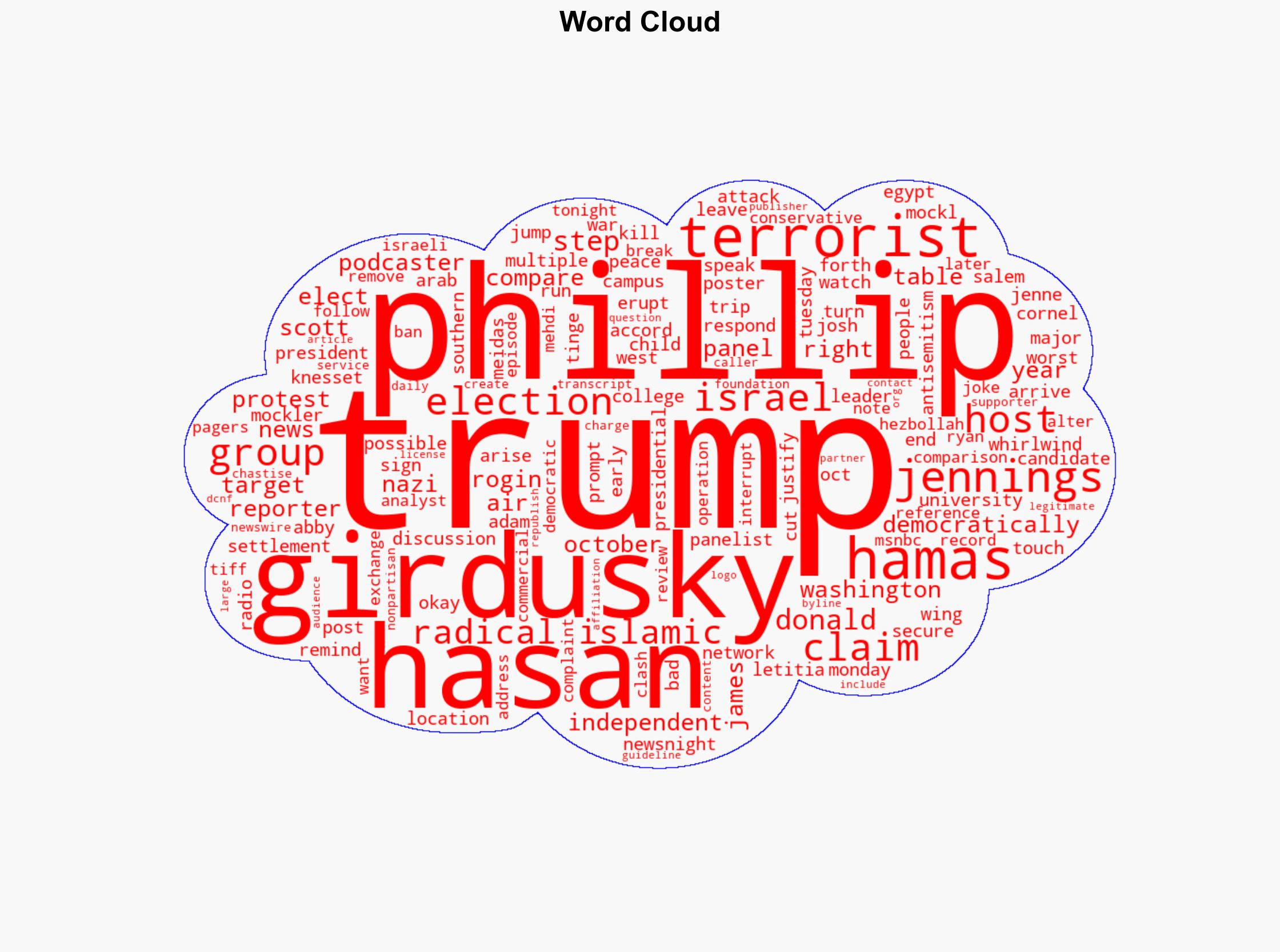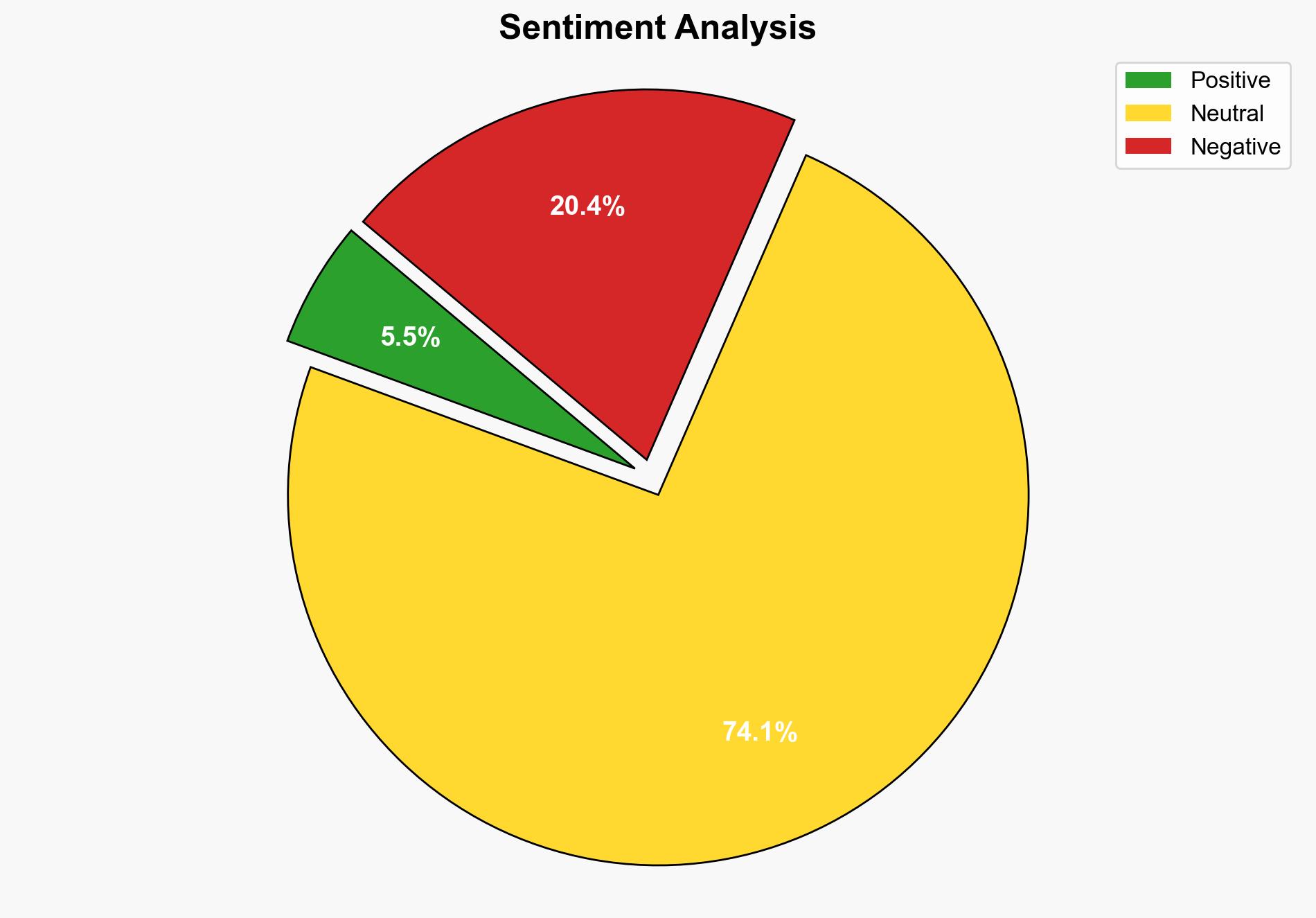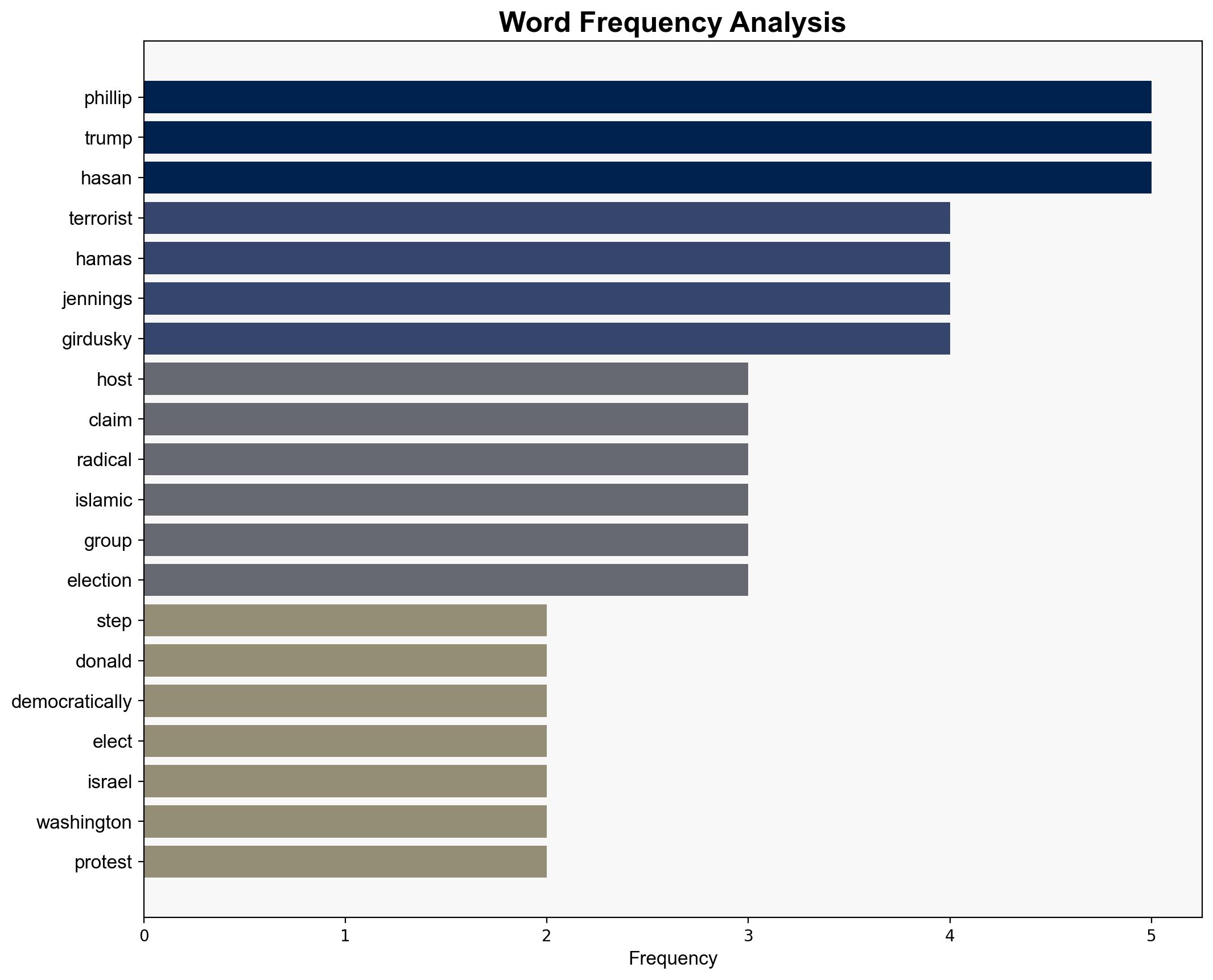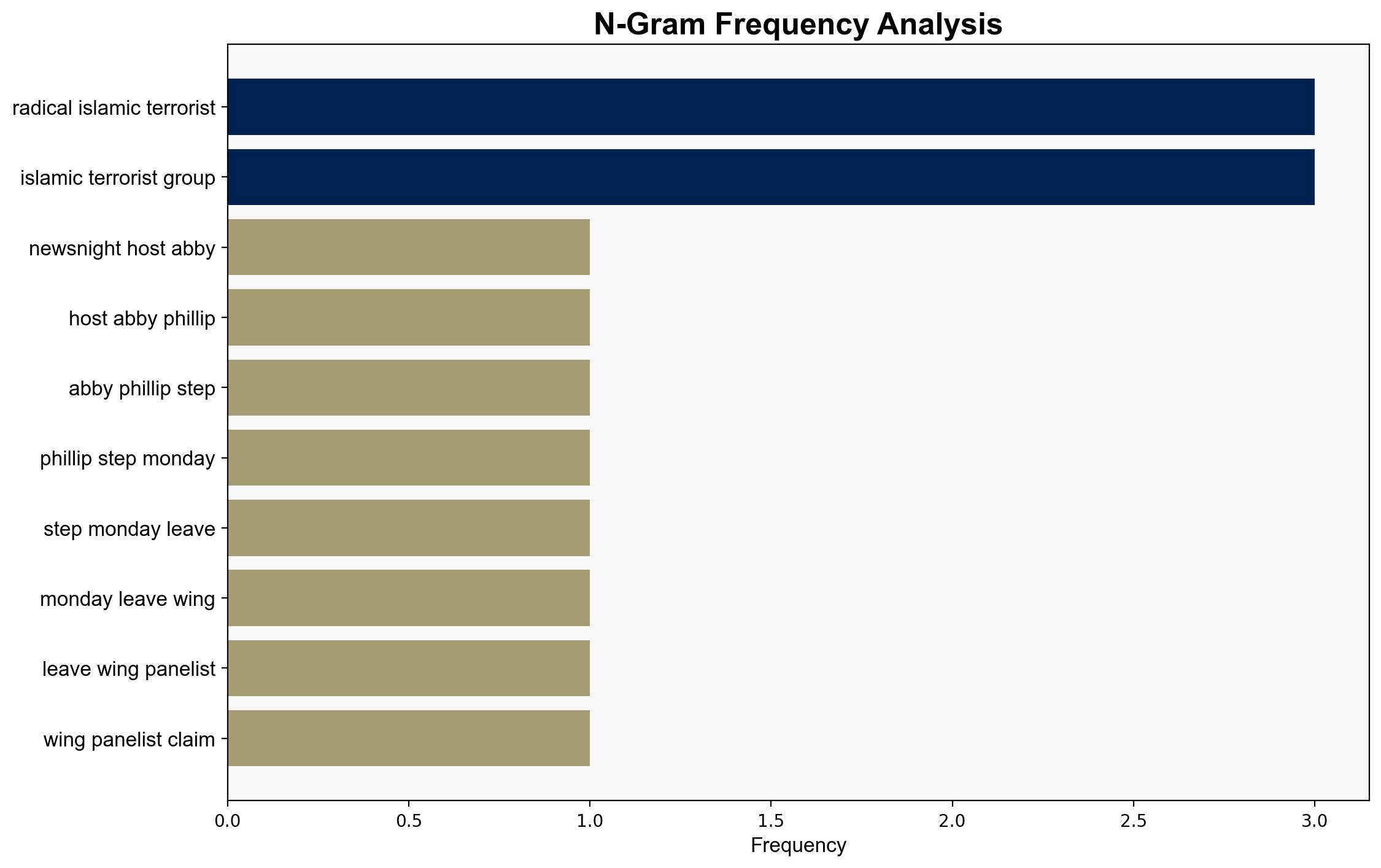Not Going To Make That Comparison Liberal Panelists Comparison Of Trump To Hamas Too Much For Even Abby Phillip – The Daily Caller
Published on: 2025-10-14
Intelligence Report: Not Going To Make That Comparison Liberal Panelists Comparison Of Trump To Hamas Too Much For Even Abby Phillip – The Daily Caller
1. BLUF (Bottom Line Up Front)
The strategic judgment is that the comparison of Donald Trump to Hamas by liberal panelists is primarily a rhetorical device rather than a substantive equivalence. The most supported hypothesis is that this comparison is intended to provoke and polarize rather than provide a factual analysis. Confidence level: Moderate. Recommended action: Monitor media narratives for potential escalation in rhetoric that could influence public opinion and political polarization.
2. Competing Hypotheses
1. **Hypothesis A**: The comparison of Trump to Hamas is a deliberate rhetorical strategy used by liberal commentators to highlight perceived authoritarian tendencies in Trump’s political style, aiming to mobilize opposition and draw attention to controversial policies.
2. **Hypothesis B**: The comparison is an exaggerated and hyperbolic statement lacking substantive basis, primarily serving as a sensationalist media tactic to attract viewership and stir controversy.
Using the Analysis of Competing Hypotheses (ACH) 2.0, Hypothesis B is better supported due to the lack of direct evidence linking Trump’s actions to those of Hamas, suggesting the comparison is more rhetorical than factual.
3. Key Assumptions and Red Flags
– **Assumptions**: It is assumed that the panelists are motivated by political bias rather than objective analysis. Another assumption is that the audience can discern hyperbole from factual reporting.
– **Red Flags**: The potential for cognitive bias in interpreting Trump’s actions through a lens of preconceived notions about authoritarianism. The absence of clear criteria for the comparison raises questions about its validity.
– **Blind Spots**: The lack of consideration for the potential impact of such comparisons on public discourse and political polarization.
4. Implications and Strategic Risks
– **Patterns**: Increasing polarization in media narratives may contribute to a more divided public, potentially impacting democratic processes.
– **Cascading Threats**: Escalation in rhetoric could lead to heightened tensions and unrest, particularly in politically sensitive regions.
– **Potential Escalation**: If such comparisons gain traction, they could influence political campaigns and voter perceptions, affecting election outcomes.
– **Dimensions**: Geopolitical tensions may be exacerbated by domestic political rhetoric, impacting international relations and alliances.
5. Recommendations and Outlook
- Monitor media narratives for shifts in rhetoric that could influence public opinion and political polarization.
- Engage in public discourse to clarify the implications of exaggerated comparisons and promote fact-based discussions.
- Scenario-based projections:
- Best: Media narratives shift towards more balanced and factual reporting, reducing polarization.
- Worst: Rhetorical escalation leads to increased political division and unrest.
- Most Likely: Continued use of hyperbolic comparisons with limited impact on broader public opinion.
6. Key Individuals and Entities
– Abby Phillip
– Scott Jennings
– Letitia James
– Josh Rogin
– Cornel West
– Adam Mockler
– Ryan James Girdusky
– Mehdi Hasan
7. Thematic Tags
national security threats, cybersecurity, counter-terrorism, regional focus




